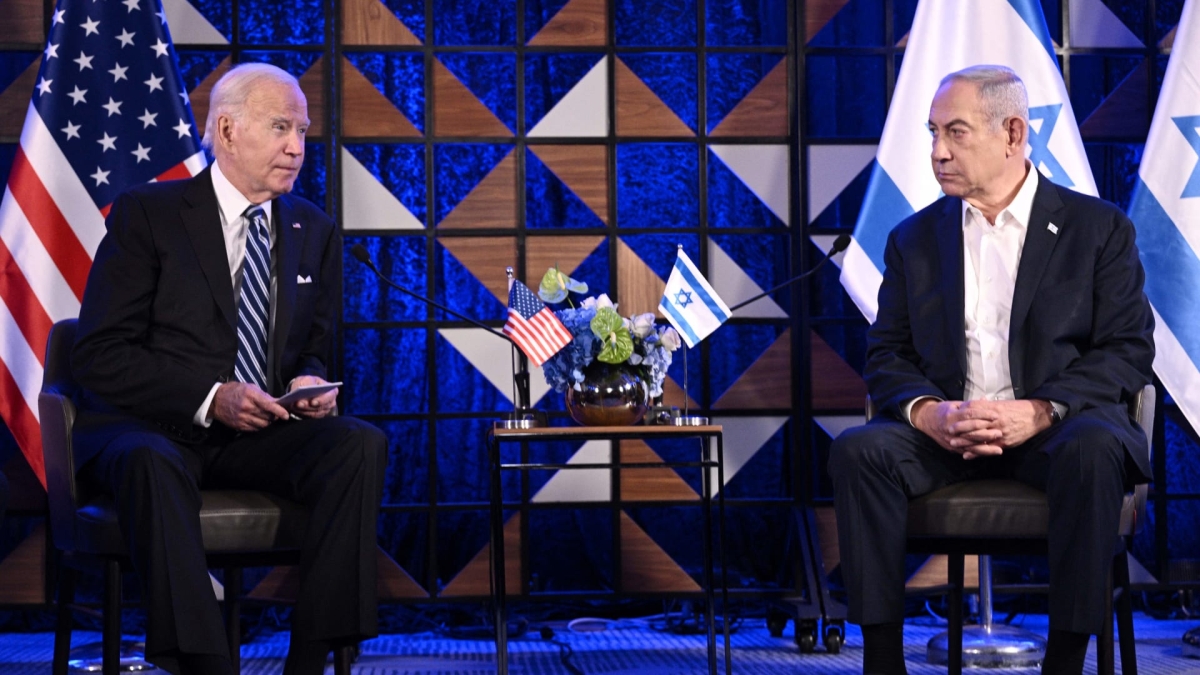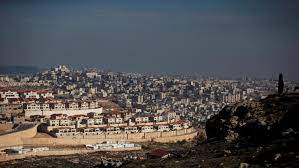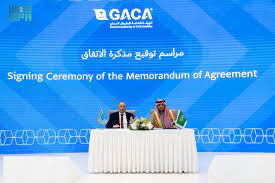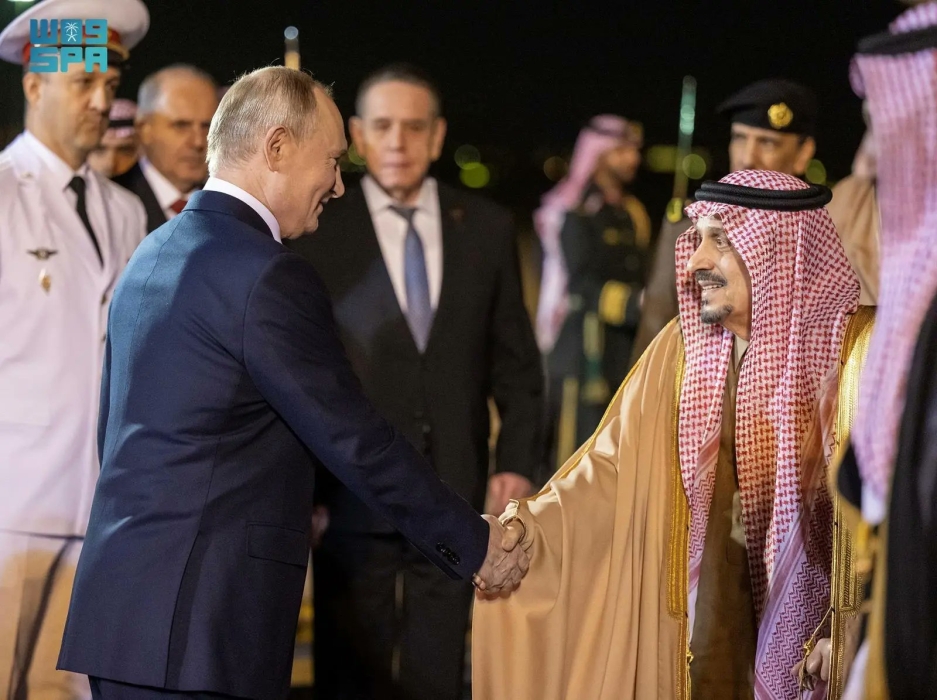"Kara Bagh" ... urban renaissance and campaign to remove mines

Al-Anbat -
Al - Anbat - Nemat - Al - Khora - Azerbaijan
Photography - Muhammad Faisal
Translated by - Neveen - Al - Jarrah
Occupation destroyed its homes and infrastructure Imanov: The Armenian occupation planted a million mines and removing them takes 25 years "Shusha” is a symbol of victory and "Kanja” commemorates the victims
The Azerbaijani government organized a press tour for a number of Arab and international media outlets last week to see the current situation of the Karabakh region liberated from the Armenian occupation.
The tour in which "Al - Anbat" participated included field visits to the liberated areas and the capital Baku, which included media from Jordan, Montenegro, Croatia, Serbia and Turkey. The area’s infrastructure, water, trees, and Azeri victims there, by destroying their homes and possessions, taking their lives in cold blood, and displacing those who survived.
Personal representative of the Azerbaijani President Ilham Aliyev in the liberated economic region of Karabakh and chief adviser Erza Imanov said in statements to the media delegation that the Karabakh region is witnessing a large volume of construction and construction work, noting that work is underway to construct city centers, roads, road infrastructure and construction. New residential areas.
He said that the total area of the Karabakh region is 10 thousand square kilometers, which is approximately one third of the area of the republic, which is 86 thousand square kilometers.
Imanov added that the Armenian army was defeated by the liberated areas in a non-peaceful manner, including the city of Fuzuli, from which he spoke to the media, where he said that the Armenian occupation destroyed the houses and only their walls remained.
He pointed out that there is a contact line 200 m long and 5 km wide full of mines, which were detected by experts with previous international experience in removing mines.
He pointed out that the liberated areas contain more than one million mines and it takes 25 years to remove them, at a cost of 50 billion dollars.
Imanov also said that the work to remove mines comes according to priorities, as the great goal of the Azerbaijani authorities today is to revitalize the liberated areas, which the indigenous Azerbaijani people are preparing to return to at all costs, indicating that the Armenian occupation has planted mines on large areas of the liberated territories He presented inaccurate maps of their whereabouts, in an attempt to inflict casualties on the Azerbaijani side, which is evidence of the high level of hatred for the Azerbaijani people.
Imanov, who accompanied the press delegation on a short tour inside the city of Fuzuli in the Karabakh region, stopped at one of the destroyed mosques called "Mardanli" mosque in the village of Mardin and is considered one of the live scenes of the tampering and destruction of religious monuments by the Armenian occupation, which desecrated the mosque and many other mosques by converting it According to Imanov, the Azerbaijani government has maintained its current status as a historical witness to the Armenian tampering with religious monuments, and that the Armenian occupation exceeded its limits by tampering with religious writings on its walls and turning them into demonic symbols.
He also indicated that the Kara Bagh region includes 80 mosques that will be reconstructed, in addition to rehabilitating places of worship for people of other faiths, and that the Azeri leadership seeks to turn it into a green area and puts all material and human capabilities for this goal.
He pointed out that the city of Fuzuli was subjected to major military attacks, which resulted in the destruction of the city center, which included housing, schools and a newspaper building, in addition to commercial and cultural centers.
During the tour, the press delegation was briefed on one of the lakes that was subjected to a major environmental pollution by the Armenian occupation, which tampered with the purity of the lake’s water by throwing harmful substances, which affected the large agricultural areas that surrounded it, as before the occupation there were green spaces.
The personal representative of President Aliyev in the region gave a presentation about Fuzuli Airport from inside the airport, and confirmed that the airport began operating on September 5 last year, when the passenger plane Airbus A-340-500 "Karabakh", which took off from Baku, landed, noting that today the region is considered the gateway And that the cost of the airport, which was inaugurated on October 26 last, amounted to 44 million dollars with an area of more than 100 square kilometers and was built within 8 months, and that one of the most important goals of this airport is to ensure the arrival of foreign guests to the city of "Shusha".
The smart village in Zangilan
During the press tour in the Karabakh region, we visited the "smart village” in Zangilan, which was established to receive the returnees to their homes in the region. The village is prepared and equipped with the latest technologies in line with strategies that rely on the environment and sustainable development through the use of renewable energy. In addition to a water fountain, restaurants, coffee, a small mall and a bank.
Today, the village is home to about 66 families, who were moved in several stages, and job opportunities were provided to 90% of them.
Shusha and her victory by climbing the horse field
The city of Shusha, which was recovered from the Armenian occupation, is a symbol of victory for the leadership, the army and the Azerbaijani people, and the Shusha Castle is one of the most important historical monuments in the city.
One of the most prominent images of the courage and durability of the Azeri army was that it climbed the plain of the horse field in Shusha and dug with his hands the steps of victory by climbing dangerous and thoughtful to restore the city and this step, according to officials who indicated in the tour that it is a historical precedent.
Shusha, which the Azerbaijanis consider the most important and biggest victory over the Armenian occupier, is witnessing a qualitative transfer in construction and reform, and after a year of "Al - Anbat "tour there are still statues of Azerbaijani intellectuals and musicians, which were subjected to shooting and some of them were burned by the Armenian occupation during the last war. Azerbaijani thought and history.
Ismail Ismayilov, a writer, author and one of the local residents told the media delegation that a great reconstruction movement is taking place in Shusha to be ready to receive the indigenous Azeri people who want to return to Shusha and that maintenance work is being done for mosques and churches inside. All religions and cultures.
During the tour, we saw the cathedral of Ghazanchitsuts, in which the government has accomplished a great deal of restoration and restoration. We had visited it last year, and today we have seen this progress.
We also visited the castle of Shusha, which dates back to the sixteenth century and witnessed the occupation and liberation. On our way to Shusha, we saw the great difference and the modernization shift in the road leading to Shusha, where the paving of the roads through which access to Shusha was very difficult and rugged and could endanger those coming to the city during walk on it.
The electricity generating stations that receive you when you enter the city operate at a power of 110 kilowatts, and they feed Shusha, Fuzuli city and its airport.
Ganja and the memory of the massacre
After we left Shusha, the delegation headed to the city of Ganja, where it coincided with the commemoration day of the massacre, to see the inhuman catastrophe that the Armenian rapist had caused by firing missiles on a residential area. Behind this attack, 26 Azerbaijani people were killed, including 6 children, and there are families who were completely killed, according to an official in the executive administration in the city.
He said that the Armenian targeting of kindergartens, 5 schools and 7 hospitals, some of which were completely destroyed, while the wounded numbered 130, as families who lost their homes were secured and by order of the President of the Republic placing them in hotels and providing food and complete supplies.
Pictures of the victims of children, women and men were placed on large plates at the scene of the accident. The youngest victim was no more than 11 months old.
In the same place there is a children's garden and the place will remain a bazaar to commemorate those who died in this place, where children's games and some collectibles for the victims and their families.
Nizami Ganjavi's tomb
The government of Azerbaijan immortalized the name of the greatest Azerbaijani poet who worked on the development of world literature by establishing a large cemetery in which the grave is located, and it is considered a large museum for visitors and tourists from different countries of the world.
He was born in the twelfth century AD in Ganja and was an inspiration to many writers, poets and actors with his ideas, and the government established an international Ganja Nizam Center to publish his works due to their intellectual and literary importance.
Military booty garden
The victories of the Azerbaijani army in its war against the usurper and its expulsion from the Karabakh region within 44 days brought great military spoils. And the Military Spoils Garden visited by "Al - Anbat ", which is located in the heart of the capital Baku, included weapons, heavy equipment, missile systems, military vehicles and ammunition left by the occupation with this defeat in the war, in addition to a panel containing plates of more than 2,000 cars seized by the Azerbaijani forces. The garden also included Iskander-M missiles Ballistic destroyer and fully destroyed warplane.































